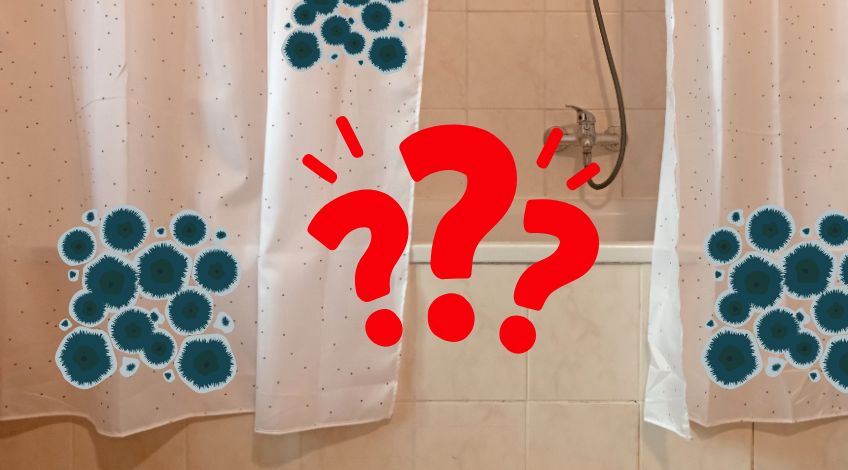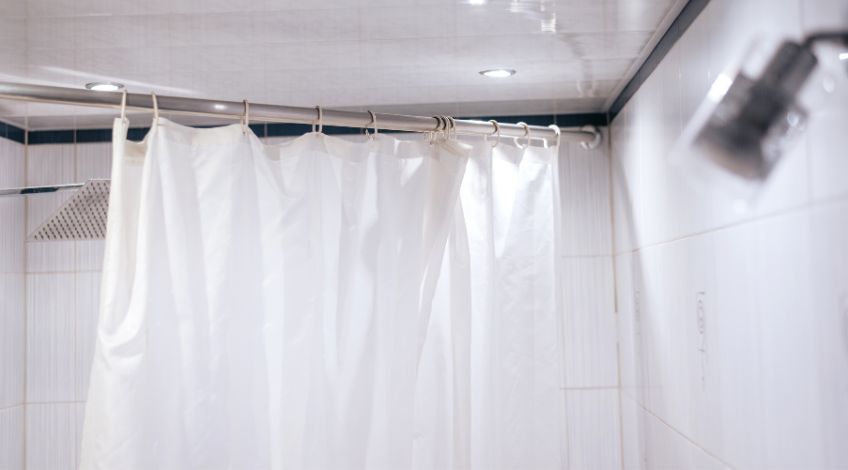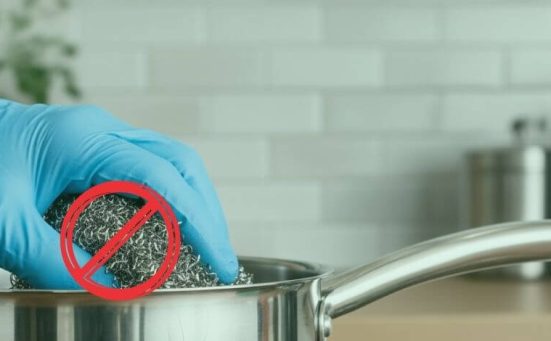
Why Your Shower Curtain Keeps Going Mouldy (And How To Stop It)
Is your shower curtain constantly turning brown, orange or black along the bottom? No matter how often you wash or replace it, the mould just keeps coming back? You’re not alone.
Mouldy shower curtains are one of the most common bathroom annoyances in UK homes and there’s a very good reason why it keeps happening.
In this guide, we’ll explain exactly why mould builds up, the mistakes most people make without realising and the easy steps you can take to keep your shower curtain clean, fresh and mould free for good.
What Causes Mould On Shower Curtains?
The main reason your shower curtain goes mouldy is constant damp and poor ventilation. Bathrooms often have limited airflow, especially in older homes with no extractor fan or small windows.
When moisture from hot showers lingers in the air and settles on fabric or plastic, mould and mildew have the perfect place to grow.
Here’s what typically causes the problem:
- Water splashes onto the curtain during use
- It stays wet for hours after every shower
- Steam builds up in the room with nowhere to escape
- The curtain is bunched up or folded, trapping moisture
- Soap scum, shampoo and body oils stick to the surface, feeding mould spores
All of this creates the ideal damp, warm and dark environment that mould absolutely loves.
The Types Of Mould You Might See
That black grime along the bottom of your curtain? It’s most likely black mould (Stachybotrys) or pink/orange mould (Serratia marcescens), both common in UK bathrooms. While black mould looks worse, pink mould is also a bacterial growth that thrives in humid spots.
Both are unpleasant and can cause allergic reactions, asthma flare ups or irritation, especially if you touch the mould regularly or inhale the spores in a steamy bathroom.
How To Clean A Mouldy Shower Curtain Properly

If your shower curtain is already covered in mould, don’t bin it just yet. Most fabric and even some plastic curtains can be cleaned easily at home with things you likely already have.
Here’s what to do:
- Remove the curtain and check the label. If it’s machine washable, great. If not, you’ll need to clean it by hand.
- For machine washing, put the curtain in with towels (to scrub while tumbling) on a gentle setting using warm water, your regular detergent and half a cup of white vinegar.
- For handwashing, soak the curtain in a bathtub or bucket with warm water, white vinegar and a splash of bicarbonate of soda. Let it sit for an hour, then scrub with a soft brush or sponge.
- Rinse thoroughly and hang it up to dry fully before using it again, ideally outside or in a well ventilated room.
Never put a plastic curtain in the tumble dryer, as the heat can warp or melt it. Fabric curtains should be air dried too, just to be safe.
How To Prevent Mould On Your Shower Curtain For Good
Stopping mould before it starts is much easier than scrubbing it off later. The key is to keep your shower curtain dry and clean between uses.
After every shower, pull the curtain fully across so it dries evenly without folds trapping water. Open a window or switch on your extractor fan to let out steam and reduce damp air.
Once a week, wipe the curtain down with a cloth to remove soap scum and moisture. You can also spray it with white vinegar, which helps stop mould spores from settling.
If you’re using a fabric curtain, wash it every few weeks on a gentle cycle. For plastic ones, a wipe down with vinegar or mild detergent usually does the trick.
If your bathroom stays humid, consider placing a small dehumidifier or moisture absorber nearby. With a few small habits, you can keep your curtain fresh, clean and mould free for good.
Should You Use A Fabric Or Plastic Shower Curtain?

Both fabric and plastic shower curtains are common in UK homes and each has its pros and cons depending on your bathroom setup and how much maintenance you’re willing to do.
Fabric shower curtains, usually made from polyester or microfibre, offer a softer look and feel. They’re often machine washable, which makes them easier to clean regularly and helps prevent mould build up.
However, they’re not fully waterproof on their own and may need a separate liner to stop water from leaking onto the floor. They also take longer to dry, so proper ventilation is key.
Plastic shower curtains, made from materials like PEVA or PVC, are fully waterproof and tend to cost less. They’re easy to wipe clean but they attract more soap scum and can cling to the bath, trapping moisture that leads to faster mould growth.
Many aren’t machine washable and once they start to discolour or smell, it’s often best to replace them.
If you prefer a curtain that’s easy to wash and reuse, fabric is the better option. If you want something waterproof and budget friendly, plastic may suit you, just be prepared to clean it more often or replace it when mould appears.
Is Shower Curtain Mould A Health Risk?
For most people, mouldy curtains are more of a nuisance than a serious danger. But for those with asthma, allergies or compromised immune systems, breathing in mould spores daily could cause problems, including coughing, wheezing or skin irritation.
Children and elderly people may also be more sensitive to mould exposure. So even if it doesn’t look too bad, it’s worth tackling before it spreads further.
Help Others Keep Their Shower Curtains Mould Free!
These simple, low effort cleaning habits are ideal for busy people. Share them on social media to show how easy it can be to prevent mould from building up on shower curtains.
SEE ALSO: How To Remove Mould From All Areas Of Your Shower
Also, follow us on Pinterest ...



